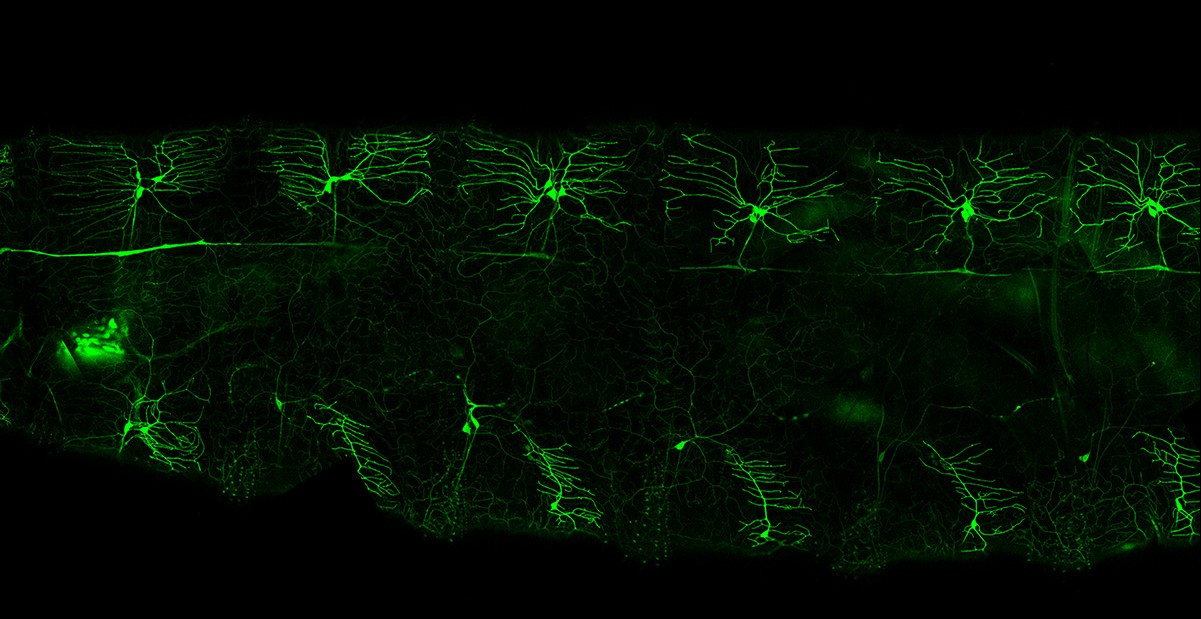The proprioceptive system endows animals with an ability to sense body position. This sense is often taken for granted in our daily lives, in that we "intuitively" know where our hands and legs are as we move about, but this information is provided by an array of sensory neurons that are precisely positioned to detect body movements. This capacity is critically required not only for limbed organisms but also for animals with soft bodies such as Drosophila larvae, which we use as a model to study the functional organization of proprioception.
